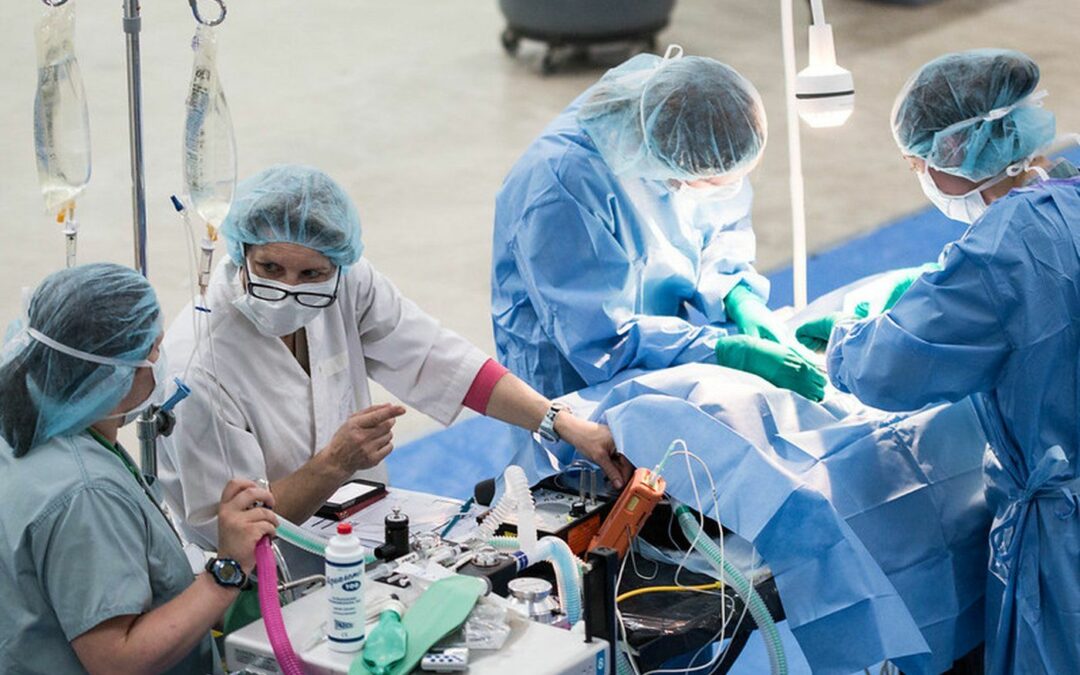By Julia Peterson, Local Journalism Initiative Reporter
Veterinary clinics tend to be bustling places on any given day, as people bring in their beloved cats, dogs and other furry or feathered companions for check-ups and necessary medical care.
But in La Ronge, Sask. this past week, a group of about five dozen teachers, students and volunteers from the Western College of Veterinary Medicine (WCVM) packed about six months worth of animal care into four intense days.
WCVM has been running these northern clinics on average twice a year since 2014 — but many had to be cancelled, postponed or scaled back due to COVID-19 risk.
This past week, they were back at the local rink, and expected to treat about 50 animals per day for ear infections, cuts and parasites, along with getting them up to date on their vaccinations.
Dr. Jordan Woodsworth, the veterinarian in charge of the clinic, said the high demand for vet services when WCVM comes to visit La Ronge is a symptom of a larger problem — the fact that the nearest year-round vet clinic is in Prince Albert, more than two hours away.
“It’s a big issue across Canada and into the States as well, particularly in northern, remote and Indigenous communities,” Woodsworth said. “It’s something that, as a society, we really have to figure out. We’re so used to the idea that … if people need veterinary care, they can go down the block and get access to it.
“But we always forget that it’s not financially feasible for everyone — and in a place like this, where the closest clinic is so far away, it’s a big logistical problem.”
In the past, she said some of the animals that come to the clinic have been really sick, with diseases like parvovirus or distemper virus that animals with access to regular veterinary care would normally be vaccinated against.
Last year, in April, the provincial government put forward a new plan to tackle vet shortages in rural areas.
At the start of this academic year, for the first time, some veterinary technology students were able to start their program remotely, with the option to complete their studies with a local veterinarian.
The government also hopes to encourage more vets to take jobs in rural and remote areas of the province, with the promise of forgiving up to $20,000 of their Saskatchewan student loans if they stay there for at least five years.
In the meantime, communities like La Ronge still rely on faraway services or infrequent clinics like this one.
Woodsworth said this takes a toll on the health of northern animals and the people who love them.
“Animals tend to be treated like family members in a lot of houses and a lot of families, in many communities,” she said. “So we always hope that those animals are going to have access to all the things they need to enjoy a healthy and full life.
“And when they don’t, that can have negative impacts on the wellness of the people that they live alongside.”
Almost every year, Woodsworth said she sees a few animals in La Ronge who are “gravely injured, very sick or very old,” and have been in pain for a long time.
“They need to be humanely euthanized, and there is no one here to do it,” she said. “That can be extremely distressing for people whose animals are incredibly important to them, to watch them suffer at the end of their life.”
Woodsworth hopes clinics like this don’t just serve as a stopgap measure in future, but instead remind people about the depth of unmet need for veterinary care in rural and remote Saskatchewan.
“This is a societal problem, not just an animal problem,” she said. “We really do need to figure out how to fill this gap.”
